This is the story of the Trondheim tram, the northernmost tram line in the world.
If you’ve been to Trondheim, you may have seen the white trams that link the city centre with the Lian recreational area. But why is there only one line in the whole city?
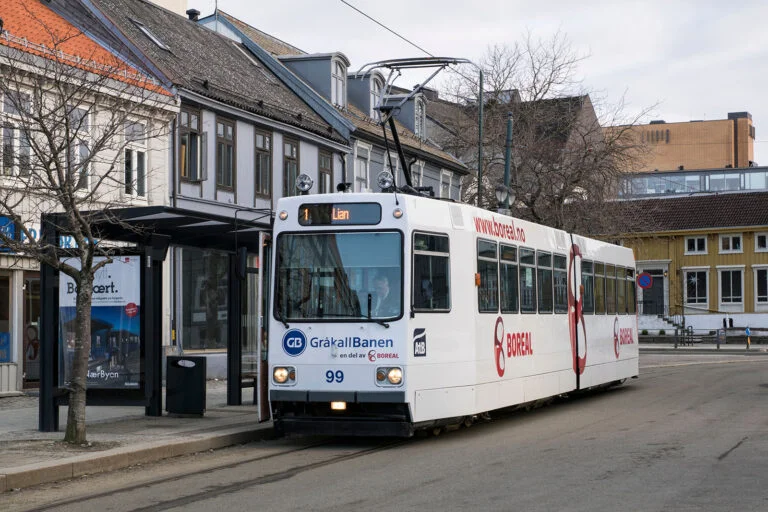
To answer that question, we need to look at the history of the Trondheim tram, how it grew to include five lines at its peak, and how it shrivelled down to its current state.
While we're at it, we’ll examine plans to revive the tram system in Trondheim in the future. But first, let's explain why it's well worth a trip.
Why travel with the Trondheim tram?
A trip on the Gråkallbanen tram offers stunning views of the city, as well as affording you the bragging rights associated with riding on the world's northernmost tram.
That title did not always belong to Trondheim. Until 2004 it belonged to the Russian town of Arkhangelsk, which dismantled its tram network that year.
The tram's final stop lies at the border of the Bymarka outdoor area, with its extensive network of hiking and cross-country skiing trails. We recommend the walk around the local lake, Lianvatnet.
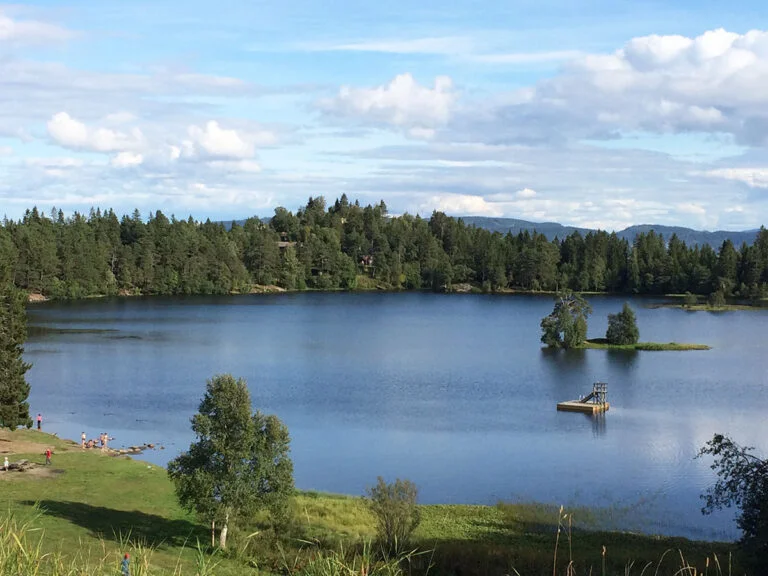
The trail is quite easy and well maintained, and it's an accessible way to get a taste of the legendary Norwegian outdoors life. A historic restaurant is also located close to the tram stop, but it sadly shut down in the wake of the pandemic.
Taking the tram in Trondheim
If you ever come to Trondheim and wish to take the tram, it’s as simple as buying a regular bus ticket. These can be purchased via the AtB app, by sms, at certain Coop, Narvesen and 7-Eleven locations, and at ticket machines located at various stops.
At the time of writing, tickets cost NOK 42 for 90 minutes, or NOK 126 for a full day. Persons over 67 years old get a 50% rebate.
Special chartered trams also operate when cruise ships are in town – tickets for those can be purchased through the cruise line’s excursion office – but be prepared to shell out a lot more money for those.
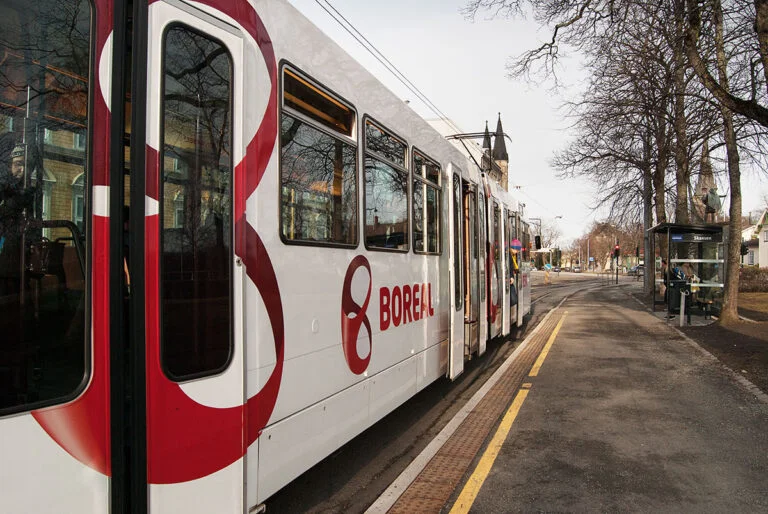
History of the Trondheim tram
The first line of the Trondheim tram opened in 1901, with one line crossing town, linking the Ila area in the West to the Buran area in the East.
Read more: The History of Trondheim
With no private cars and few other public transport options, it rose in popularity very quickly and attracted 1.6 million passengers in its first full year of operation.
This result is particularly impressive considering that the city had only about 38,000 inhabitants at the time (as a comparison, the population in 2020 was just above 200,000).
The expansion years
The service grew steadily in the first half of the 20th century, with new lines being established and passenger numbers rising quickly. The first 15 years saw ridership numbers quadruple.

At its peak, the network had five lines. The Lade line, the very first one to be established, was built upon and eventually linked the centre square of town to the Lade area.
The Ila line linked the centre square to a stop close to Ila park. Elgeseter line linked the Dalsenget area (corresponding to today’s Hesthagen bus stop) to the central station.
The Singsaker line linked the Rosenborg area to the Elgeseter line (the connecting point being at Studentersamfundet). Finally, the Gråkall line – the only one that is still operating – links St. Olav’s street, in the centre, to the Lian recreational area.
The beginning of the end
In 1972, the two companies behind Trondheim’s tram lines, Gråkallbanen and Trondheim Sporvei, were merged with municipal bus company Trondheim Trafikkselskap. From then onwards, there was a lot of political pressure for the dismantling of the tram network in favour of the buses.
After several years of hot debate, the municipality decided to stop all tram service in 1988. The decision was so controversial that the politicians behind it made sure to either strip out or asphalt over most of the network in the days that followed, to make sure the tram was gone for good.
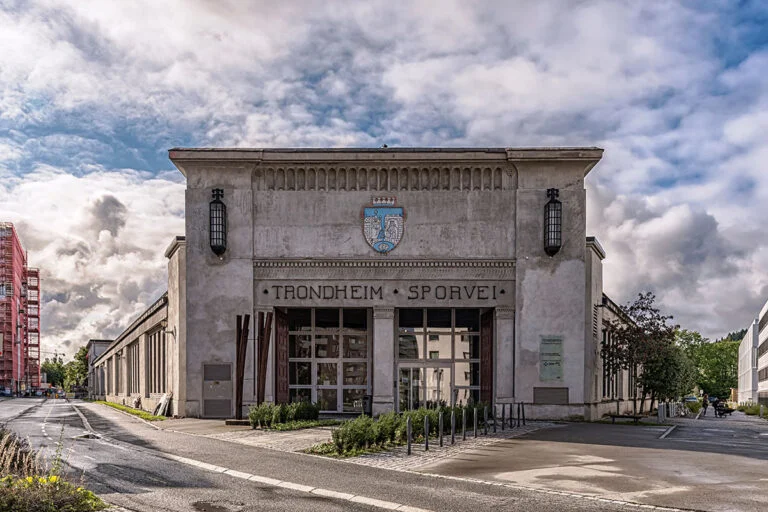
The line between the city centre and Lian was intact though. And two years later, a group of enthusiasts managed to reopen it.
Attempts by the municipality to sell 11 unused trams failed, and the group were allowed to rent them for a symbolic sum. The tram line has been operating ever since and is now an integral part of the city’s public transportation network.
Record passenger numbers
Because it goes through the very popular Byåsen residential area, the tram line has been increasing in popularity over the past few years. Ridership reached new records in 2021 despite the ongoing pandemic.
Expansion plans
The tram has its die-hard fans, and many would like the network to be extended once again even beyond what it was at its golden age. A feasibility study was conducted in 2010, and concluded that ridership numbers would not be sufficient to justify the investment.
Super buses
Based on the study, the city decided to respond to the growing demand for public transportation by revamping its whole bus system and putting new tram-like metro buses into use.
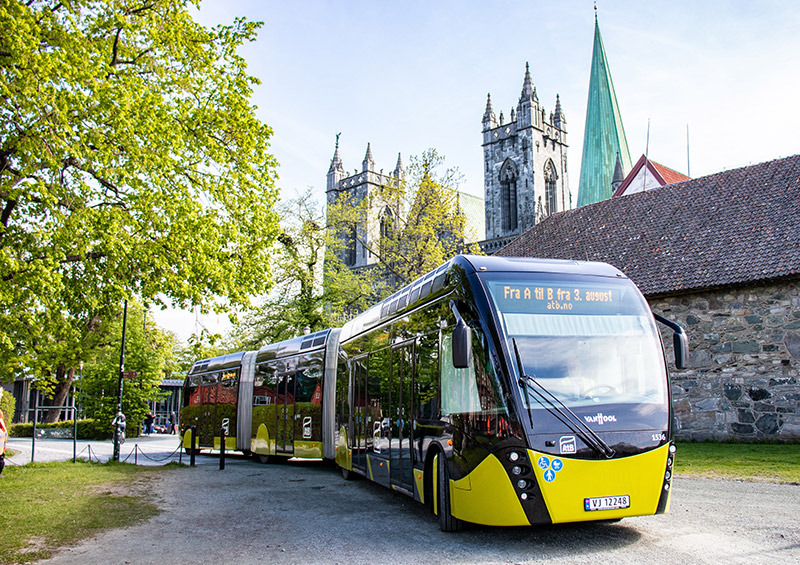
In parallel, the fleet is gradually being replaced with more environmentally-friendly buses, with the number of electric ones increasing steadily.
A zero-growth commitment
The city of Trondheim is constantly expanding, and as part of its strategy to fight global warming, it has committed to a zero-growth strategy for car traffic.
This means that regardless of population increases, car traffic should remain stable in absolute numbers (or even decrease) until 2050.
To reach this objective, the city has to make it more attractive for people to commute by foot, by bike and by public transportation.
This means that a revival of the tram network, even though it has been rejected in 2010, could be on the table at some point in the future.
Tell us what you think
Have you ridden on the Trondheim tram line? If not, would you like to try it? Does your hometown have light rail infrastructure or a commitment against increases in car traffic? Let us know in the comments


We rode the tram during our train / bus tour up the east coast of Sweden and down the west coast of Norway in August 2019. We had heard that there was a restaurant at the end of the line. We got that wrong because there was nothing there but a small rail circle and sheep grazing in the middle. So we went back with the same tram. The woman driving the tram was a lovely person who had an encyclopaedic knowledge of the tram’s history. So both on the outward and inward bound trips she told us the history of the tramways and pointed out the passing scenery. The tram company could have charged for her guiding services!
We backpacked and stayed at AirBnB homes, except for Stavanger and Bergen where it was cheaper to stay in a hotel. (If you only stay one or two nights in an AirBnB the cleaning fees are so expensive that a hotel can be a better option.)
Actually the tramway in the Russian town of Arkhangelsk was NOT the world’s northernmost. That title goes to Kiruna in Sweden which once has a quite extensive tram network back in the day.